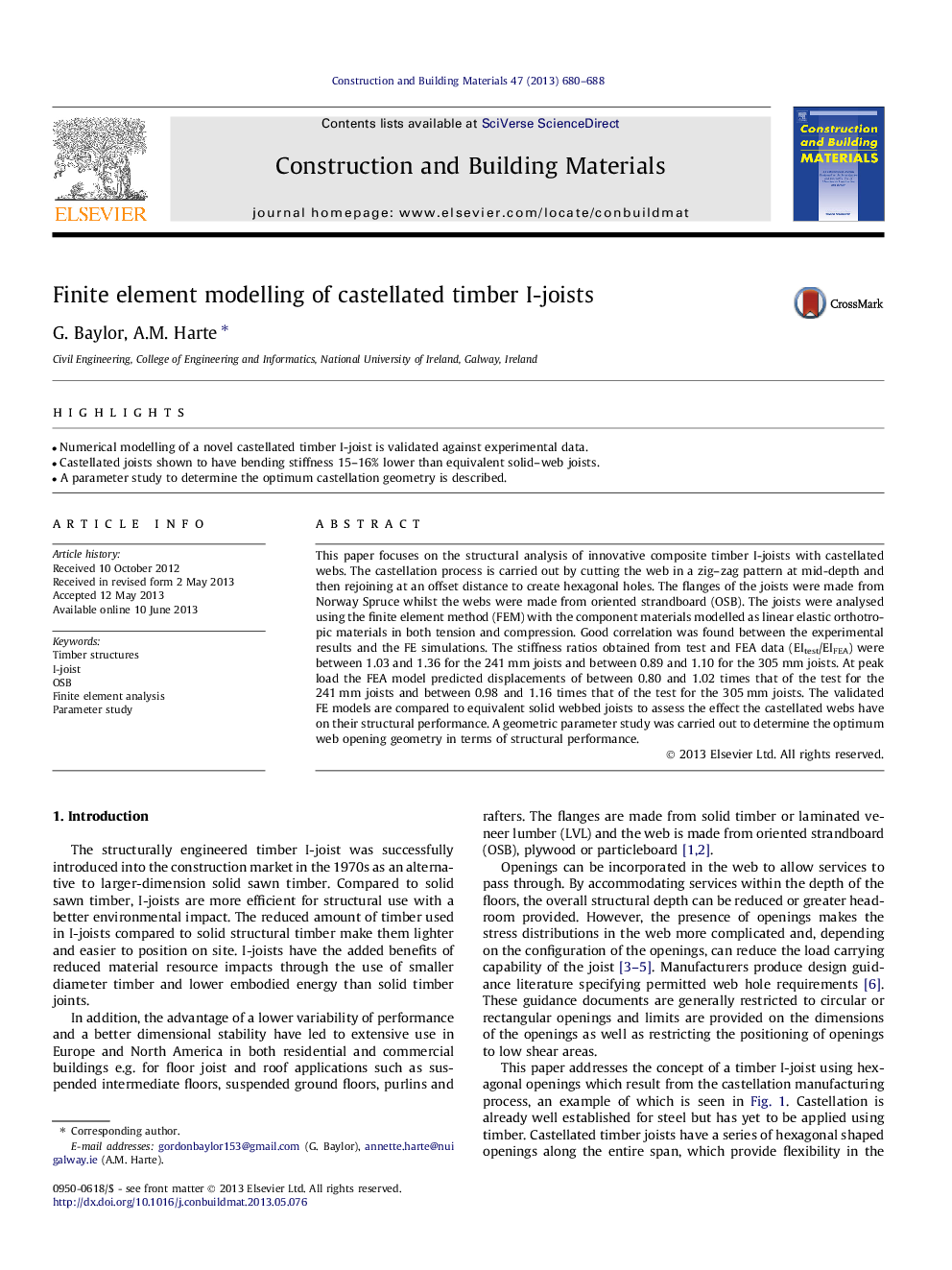| Article ID | Journal | Published Year | Pages | File Type |
|---|---|---|---|---|
| 6725627 | Construction and Building Materials | 2013 | 9 Pages |
Abstract
This paper focuses on the structural analysis of innovative composite timber I-joists with castellated webs. The castellation process is carried out by cutting the web in a zig-zag pattern at mid-depth and then rejoining at an offset distance to create hexagonal holes. The flanges of the joists were made from Norway Spruce whilst the webs were made from oriented strandboard (OSB). The joists were analysed using the finite element method (FEM) with the component materials modelled as linear elastic orthotropic materials in both tension and compression. Good correlation was found between the experimental results and the FE simulations. The stiffness ratios obtained from test and FEA data (EItest/EIFEA) were between 1.03 and 1.36 for the 241Â mm joists and between 0.89 and 1.10 for the 305Â mm joists. At peak load the FEA model predicted displacements of between 0.80 and 1.02 times that of the test for the 241Â mm joists and between 0.98 and 1.16 times that of the test for the 305Â mm joists. The validated FE models are compared to equivalent solid webbed joists to assess the effect the castellated webs have on their structural performance. A geometric parameter study was carried out to determine the optimum web opening geometry in terms of structural performance.
Related Topics
Physical Sciences and Engineering
Engineering
Civil and Structural Engineering
Authors
G. Baylor, A.M. Harte,
